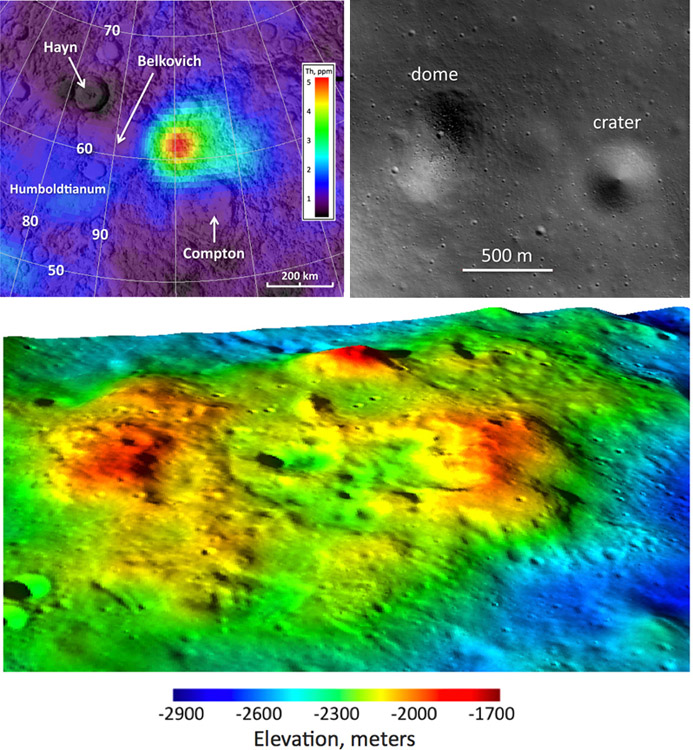Difference between revisions of "July 26, 2011"
| (4 intermediate revisions by the same user not shown) | |||
| Line 1: | Line 1: | ||
__NOTOC__ | __NOTOC__ | ||
=Silica-Rich Domes And Caldera= | =Silica-Rich Domes And Caldera= | ||
| + | <!-- Start of content --> | ||
<!-- ws:start:WikiTextHeadingRule:0:<h1> --> | <!-- ws:start:WikiTextHeadingRule:0:<h1> --> | ||
<!-- ws:start:WikiTextLocalImageRule:6:<img src="/file/view/LPOD-Jul26-11.jpg/242836009/LPOD-Jul26-11.jpg" alt="" title="" /> -->[[File:LPOD-Jul26-11.jpg|LPOD-Jul26-11.jpg]]<!-- ws:end:WikiTextLocalImageRule:6 --><br /> | <!-- ws:start:WikiTextLocalImageRule:6:<img src="/file/view/LPOD-Jul26-11.jpg/242836009/LPOD-Jul26-11.jpg" alt="" title="" /> -->[[File:LPOD-Jul26-11.jpg|LPOD-Jul26-11.jpg]]<!-- ws:end:WikiTextLocalImageRule:6 --><br /> | ||
| − | <em>images from Nature Geoscience by way of [http://www.space.com/12419-moon-side-rare-volcanoes.html | + | <em>images from Nature Geoscience by way of [http://www.space.com/12419-moon-side-rare-volcanoes.html Space.com]</em><br /> |
<br /> | <br /> | ||
| − | Nearly all lunar volcanic eruptions produced mare basalts that fill nearside basins and the floor of the farside South Pole-Aitken Basin. Very little evidence for volcanism exists in the lunar highlands. Now Brad Jolliff and colleagues have [http://www.nature.com/ngeo/journal/vaop/ncurrent/full/ngeo1212.html | + | Nearly all lunar volcanic eruptions produced mare basalts that fill nearside basins and the floor of the farside South Pole-Aitken Basin. Very little evidence for volcanism exists in the lunar highlands. Now Brad Jolliff and colleagues have [http://www.nature.com/ngeo/journal/vaop/ncurrent/full/ngeo1212.html published] new information from LRO documenting a likely volcanic landform at the famous Compton-Belkovich [[February_19,_2007|L101]]?<br /> |
<br /> | <br /> | ||
| − | <em>[mailto:tychocrater@yahoo.com | + | <em>[mailto:tychocrater@yahoo.com Chuck Wood]</em><br /> |
<strong>Update</strong><br /> | <strong>Update</strong><br /> | ||
| − | The LROC [http://lroc.sese.asu.edu/news/index.php?/archives/426-Farside-Highlands-Volcanism!.html#extended | + | The LROC [http://lroc.sese.asu.edu/news/index.php?/archives/426-Farside-Highlands-Volcanism!.html#extended site] has an image of the CBVP and a dramatic low Sun image of one of the domes showing that it must have a slope greater than 13°!<br /> |
<br /> | <br /> | ||
<strong>Related Links</strong><br /> | <strong>Related Links</strong><br /> | ||
Clementine Atlas Plates 15 & 16<br /> | Clementine Atlas Plates 15 & 16<br /> | ||
<br /> | <br /> | ||
| + | <p><b>Yesterday's LPOD:</b> [[July 25, 2011|The Earth's Moon]] </p> | ||
| + | <p><b>Tomorrow's LPOD:</b> [[July 27, 2011|An Amateur Scientist Speaks]] </p> | ||
<hr /> | <hr /> | ||
| + | {{wiki/ArticleFooter}} | ||
Latest revision as of 22:59, 22 March 2015
Silica-Rich Domes And Caldera

images from Nature Geoscience by way of Space.com
Nearly all lunar volcanic eruptions produced mare basalts that fill nearside basins and the floor of the farside South Pole-Aitken Basin. Very little evidence for volcanism exists in the lunar highlands. Now Brad Jolliff and colleagues have published new information from LRO documenting a likely volcanic landform at the famous Compton-Belkovich L101?
Chuck Wood
Update
The LROC site has an image of the CBVP and a dramatic low Sun image of one of the domes showing that it must have a slope greater than 13°!
Related Links
Clementine Atlas Plates 15 & 16
Yesterday's LPOD: The Earth's Moon
Tomorrow's LPOD: An Amateur Scientist Speaks
COMMENTS?
Register, Log in, and join in the comments.



